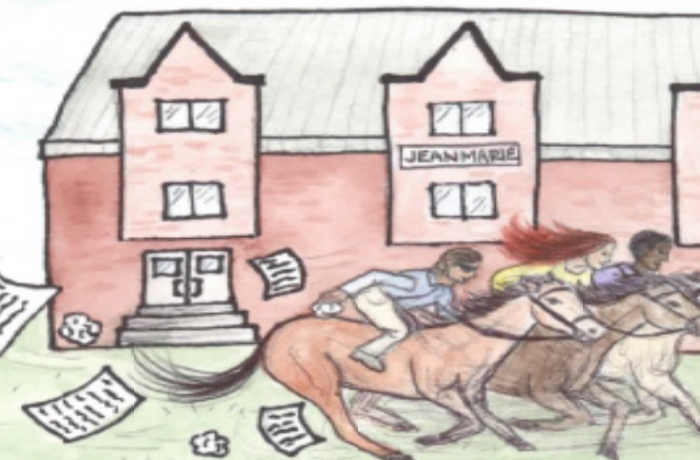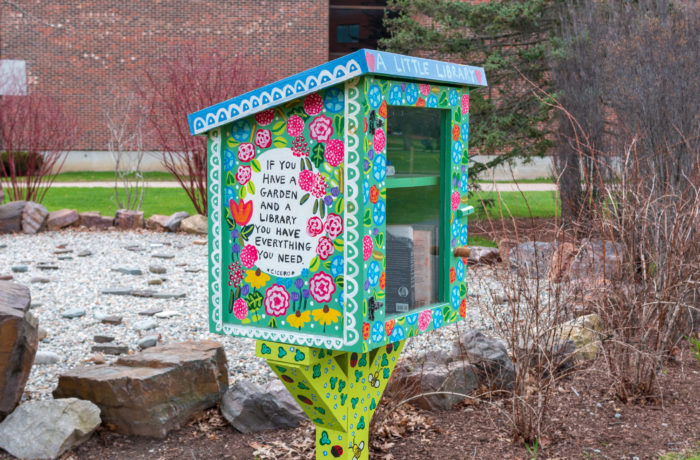By Devin Imperati

If you live in the Northeast during winter months—especially if you don’t year round—you may find yourself feeling unusually depressed. Some may simply have the ‘winter blues’, but others may be experiencing Seasonal Affective Disorder.
SAD refers to the cycle of depressive symptoms some people experience during the fall and winter months of the year. And you might find some relief in an unlikely place–the library.
Many of those with SAD have heard of phototherapy, in which the patient is exposed to full spectrum lights for a specific period of time each day. The good news for SMC students is that the Durick Library on campus has two of these full spectrum lamps available for the treatment of SAD at the circulation desk.
“The idea came from Dr. Heroux in the Chemistry Department,” said John Payne, the director of library and information services. Heroux had worked previously at a college that had these lamps and suggested to Personal Counseling (now a part of Bergeron Wellness Center) that the college may benefit from them. Personal Counseling offered to pay for the lamps if the library handled their regulation.
“The trigger [for SAD] is more or less established: a short photoperiod—shorter day length,” explained Dr. Kelly Rohan, professor of psychology and 20 year SAD researcher of the University of Vermont. “A photoperiod is the time from sunrise to sunset. That, more than any other environmental variable like temperature, cloud cover, precipitation, [or] how bright the light is, is the strongest predictor [of SAD].”
This shortened photoperiod causes some people to experience symptoms of depression. Fatigue, a depressed mood, loss of interest in enjoyable activities, loss of concentration, oversleeping, overeating, and a craving for carbohydrates are all typical signs of SAD. These symptoms all go into remission during the spring and summer and return when the days shorten again, (quote here?) Rohan said.
Exactly what about a shortened photoperiod causes SAD is, as of present, unclear, but there are ways to combat it. The three most common treatments are light therapy, cognitive behavioral therapy, and medication. For those who that are less inclined to turn to cognitive behavioral therapy or medication, light therapy (or phototherapy) can be a way to stave off the depression.
It is important to note, however, that light therapy isn’t a magic cure for SAD. It’s one of several effective treatments, but, according to Rohan, it is actually the least effective. She has observed through her studies that it won’t have a lasting impact like cognitive behavioral therapy would. This is because light therapy is a treatment that manages the symptoms only so long as the treatment continues to be used.
“The degree of improvement in light therapy is at least correlated with the degree in phase advance,” Rohan said. “If the circadian rhythm (the body’s clock) is running slow, and we give a big dose of bright light first thing in the morning to simulate early dawn, we should be resetting the biologic clock back to the proper position.” This theory, called the phase-shift hypothesis, suggests that the circadian rhythm of some people (roughly one third of SAD patients) is shifted due to the later dawn during the autumn and winter months. This leads to an excess of melatonin, which is the hormone the body produces when it is time to sleep, at inordinate times of the day.
Another important note is that light therapy is only effective if conducted during the early morning—ideally immediately after waking. The maximum exposure time during a session is recommended by many to be 30 minutes, and one should never look directly into the light.
“These lights are available for checkout for two hours,” Payne said. “They are for use only in the library. The best thing is if it’s reflected off of something you’re reading.”
To make use of one of these lamps, simply show your Knightcard at the circulation desk, ask to check out a full spectrum lamp, and return it two hours later. “If you use it as a reading light for twenty minutes, you get the benefits while you’re studying.”
Even better, if you believe you are experiencing symptoms of SAD, stop by the Bergeron Wellness Center and speak to one of the counselors. All information shared with them is confidential.


